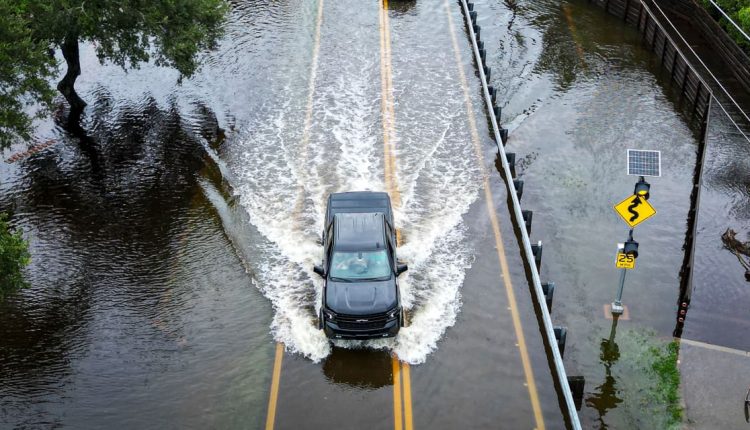Hurricane Idalia, which made landfall in Florida today, is testing a big bet by
Berkshire Hathaway
(ticker: BRK.A) earlier this year. The company has ramped up its reinsurance underwriting in the state driven by attractive high premiums. Now it’s time to see whether the losses brought by this hurricane season will offset those gains.
Ajit Jain, Berkshire’s vice chairman of insurance operations, said in May that the company had underwritten as much property-catastrophe reinsurance as its capacity allowed at the April 1 renewable date, with the segment’s written premiums rising by 30% from last year.
As attractive as those revenue are, the risks are huge too. Depending on how damaging the 2023 hurricanes are, the reinsurance giant said it could either make several billion dollars in profit or lose as much as $15 billion in the Sunshine State.
So far, things are looking up for the Warren Buffett company. Hurricane Idalia made landfall Wednesday as a powerful Category 3 storm, but weakened to a Category 1 hurricane as it made its way across Florida toward Georgia.
The average insured losses for Hurricane Idalia were projected to be $9.36 billion, wrote
UBS
analyst Brian Meredith in a Tuesday note, citing preliminary estimates from RMS, a catastrophe risk modeling firm under
Moody’s.
That would be a fraction of the $50-65 billion insured losses Hurricane Ian inflicted when it struck the state last year, according to SwissRe estimates.
That number, which was made before the hurricane made landfall, could change a lot over the coming days. “Given the very warm sea surface temperatures on Idalia’s path across the eastern Gulf of Mexico—the warmest for 40 years—there remains significant intensification potential,” says Sarah Hartley, senior manager of event response at Moody’s RMS.
Berkshire didn’t immediately respond to Barron’s request for comment.
Berkshire isn’t the only insurer attracted by the juicy premiums in the hurricane-prone state. In May, reinsurance giant
RenaissanceRe Holdings
(RNR) said it expects to underwrite more property catastrophe policies ahead of the hurricane season due to the “reasonably good rates.”
However, demand at the midyear renewal was down, particularly in Florida, said RenaissanceRe CEO Kevin O’Donnell in July’s earnings call. One of the reasons, he says, is that many primary insurers have reduced their exposure in the state or stopped underwriting altogether. Many of these policies went to Citizens, the state-backed property insurer, which typically purchases less reinsurance.
Even if the primary insurers want to stay, many—due to years of big losses and inadequate pricing—simply didn’t have the budgets to purchase additional reinsurance coverage. “The demand was there by buyers,” said O’Donnell, “They just didn’t have the wallet to be able to purchase what they needed.”
All that means primary insurers, which would shoulder catastrophe damages before reinsurance kicks in, are in a more precarious position this year. This could lead to insolvency of smaller firms with weak balance sheets, which often don’t have access to additional capital since they aren’t publicly traded, said Meyer Shields, managing director at investment bank KBW.
Florida’s property insurance market is dominated by private regional carriers. Among publicly traded names,
Progressive
(PGR) and
Allstate
(ALL) are the only top 10 writers of homeowner insurance, with 4% and 3.2% market share, respectively, according to Meredith of UBS. Progressive has a relatively high personal auto market share at 20.8%, while Allstate has a 10.5% share.
Reinsurers, on the other hand, would likely see less damage since the threshold for them to take over the payment responsibility is now much higher.
“Given the mean expected loss in the high-single digits, we would not expect a material event for reinsurers, although insured losses toward the higher end of the RMS range would likely eat into reinsurance layers,” wrote Meredith. The storm should help keep catastrophe reinsurance pricing “firm” at 2024’s renewal dates, he added.
Corrections & Amplifications:
Hurricane Ian inflicted is estimated to have inflicted $50-65 billion of insured losses last year. An earlier version of this article compared this year’s insured losses to the $112 billion in total losses from Hurricane Ian.
Write to Evie Liu at [email protected]
Read the full article here

